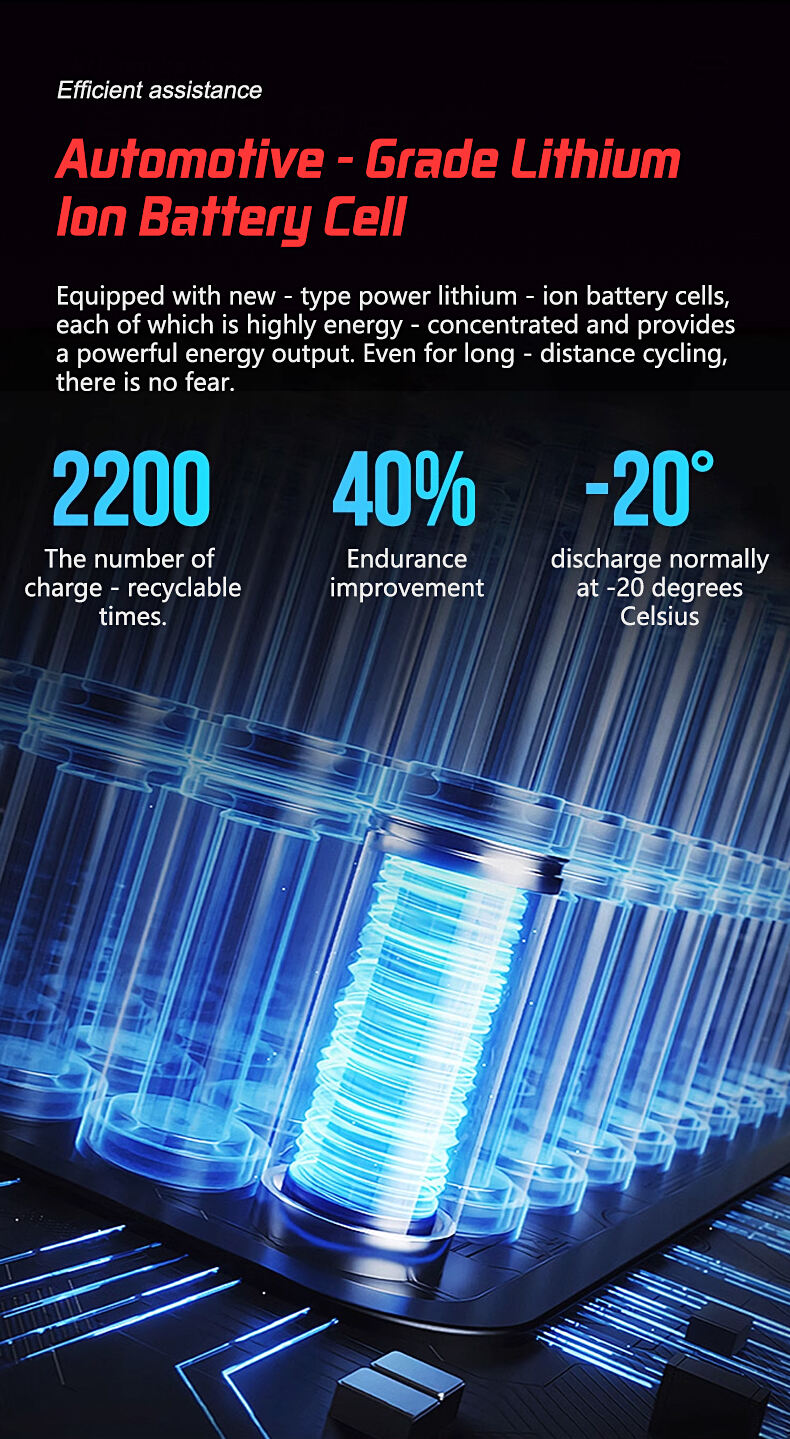Different Battery Types for Electric Bicycles and Their Features
Electric bicycles known as e-bikes have been on the rise for their effectiveness, environmental friendliness, and ease of travel. One essential aspect which determines how well an e-bike will perform is the battery. For instance, the correct battery type can optimize the range, weight, charging period, and general range of functionalities of the bike.
Lithium-Ion (Li-ion) Batteries
The most popular type of battery in electric bicycles today is lithium-ion (Li-ion) battery. They are characterized by their energy density, longevity, and being lightweight. Li-ion batteries allow for greater distances to be covered with the least recharge thus making them greatly preferred for short city commuting as well as longer distance riders.
Features:
- Long lifespan: usually around 500 to 1,000 cycles and that’s about their charging times.
- Lightweight: grants an ease of handling of the electric motorbike.
- Efficient charging: Lower than usual time to charge, which is always a good thing.
High performance OUXI Li-ion batteries are prepared to offer the best power-weight-durability balance with a guarantee of smooth and reliable riding experience.
Lithium Iron Phosphate (LiFePO4) Batteries
If you are an electric bicycle enthusiast and are looking for high-performance batteries, you will come across LiFePO4 batteries as well. They also provide more safety and stability and a longer cycle life. Their lack of portability and lower energy densities are the common disadvantages of Li-ion batteries, but their increasing durability and safety make them the most opted batteries for specific riders.
Features:
1. Safety: Does not reach the boiling point or spontaneous combustion, making them safe and more stable.
2. Long cycle life: Over 2000 charge cycles may be attained.
3. Eco-friendly: Clean and less hazardous to the environment, especially, in comparison with other batteries.
If you wish to have the most durable batteries without sacrificing functionality, OUXI provides LiFePO4 batteries with unmatched performance.
Nickel-Metal Hydride (NiMH) Batteries
NiMH batteries were the popular batteries found in e-bikes before but since newer better technology has come along in the shape of Li-ion batteries, they have been replaced. They also have a shorter lifespan as well. Some lower-end e-bikes still however use them.
Features:
1. Moderate lifespan: Charge cycles range from 300-500.
2. Li-ion Weight: Makes the bike heavier.
3. Less energy-dense: Provides less range for a single charge.
OUXI does not consider NiMH batteries as its primary focus but older or budget e-bikes may still use this type of battery.
Lead-Acid Batteries
Lead-acid batteries are the oldest type of rechargeable batteries still in use today. They are definitely heavier and less efficient than lithium based batteries, but they are still the best option for low budget e-bikes.
Features:
- Heavy weight: A disadvantage which adds to the total weight of the e-bike.
- Short lifespan: A Lead Acid Battery charges roughly around 300 cycles.
- Lower energy density: Makes for a shorter range and longer time taken to charging.
These batteries do not enjoy popularity on modern e-bikes, especially those produced by progressive brand such as OUXI who build with more effective and longer lasting technology.
It is very important to choose the proper battery for your electric bicycle as it affects its overall performance, range and level of satisfaction. OUXI has a list of lithium-based batteries such as the Li-ion, LiFePO4, providing the most out of an e-bike. No matter what type of user you are, whether it'll be commuter, recreational or performance-oriented, knowing the proper battery types and battery characteristics will help you choose the correct electric bicycle for your specific needs.


 EN
EN
 AR
AR
 BG
BG
 HR
HR
 CS
CS
 DA
DA
 NL
NL
 FI
FI
 FR
FR
 DE
DE
 EL
EL
 IT
IT
 JA
JA
 KO
KO
 NO
NO
 PL
PL
 PT
PT
 RO
RO
 RU
RU
 ES
ES
 SV
SV
 IW
IW
 LV
LV
 LT
LT
 SR
SR
 SK
SK
 SL
SL
 UK
UK
 SQ
SQ
 ET
ET
 GL
GL
 HU
HU
 MT
MT
 TR
TR
 AF
AF
 GA
GA
 CY
CY
 IS
IS
 MK
MK
